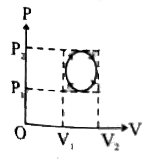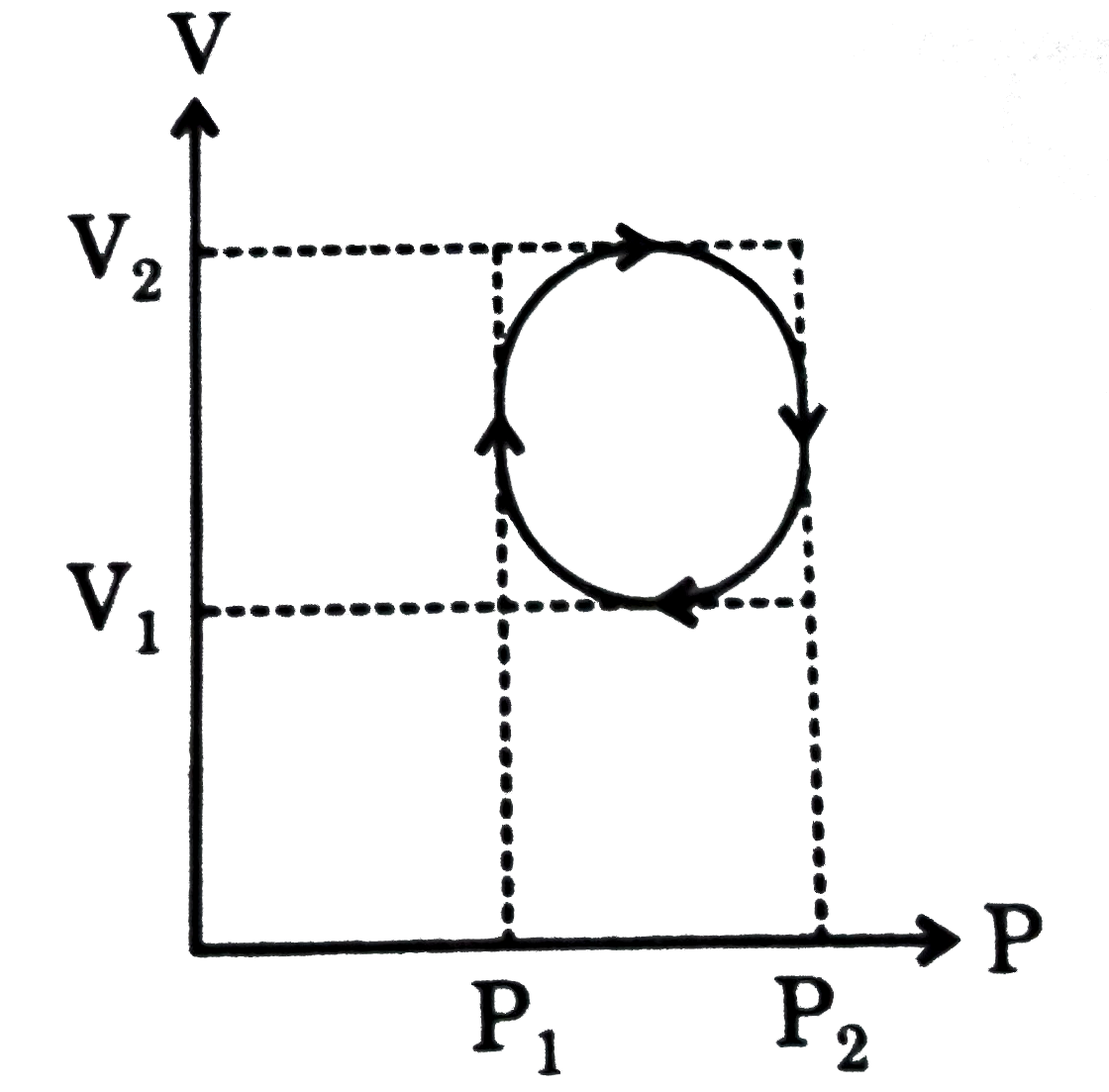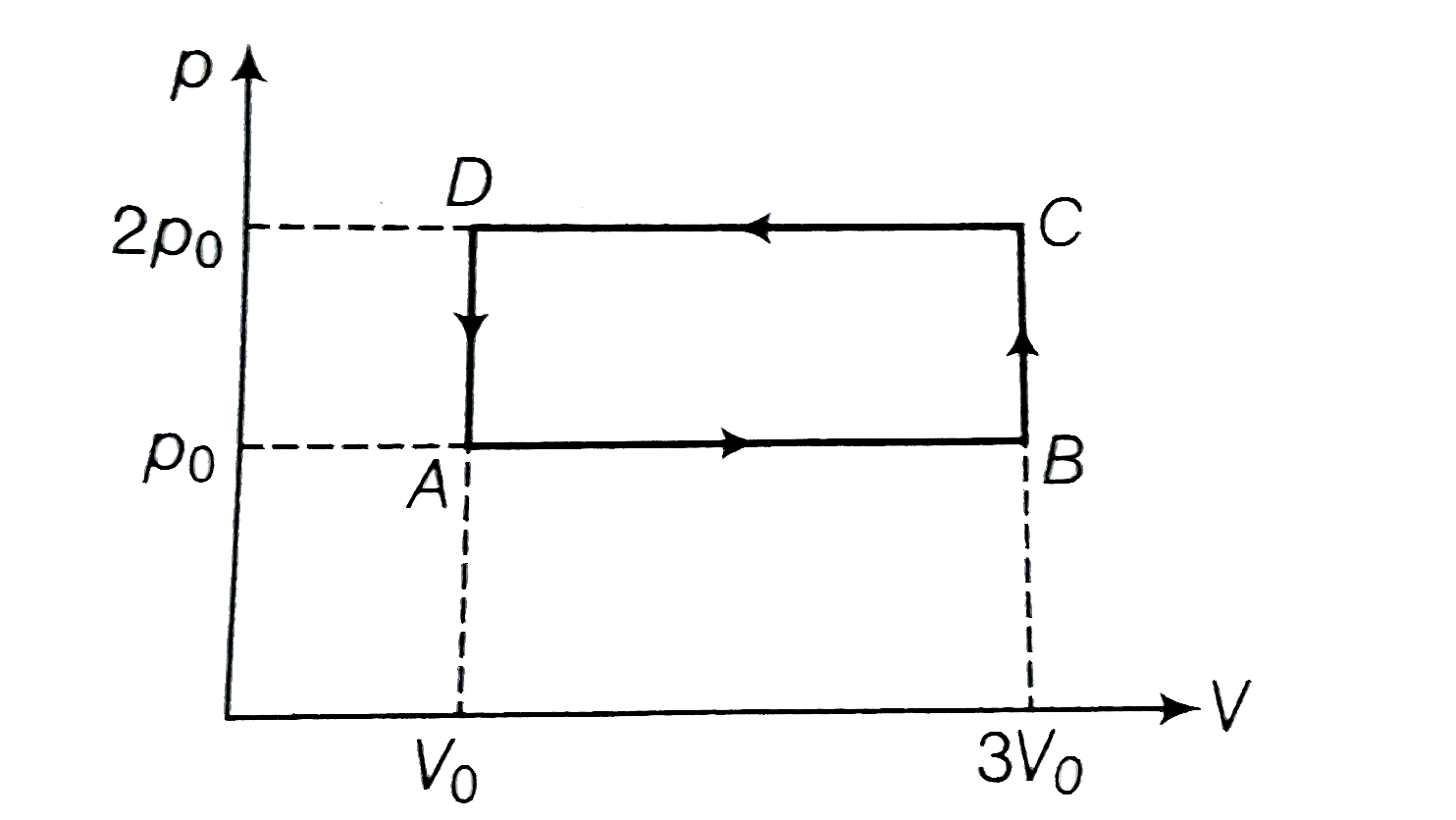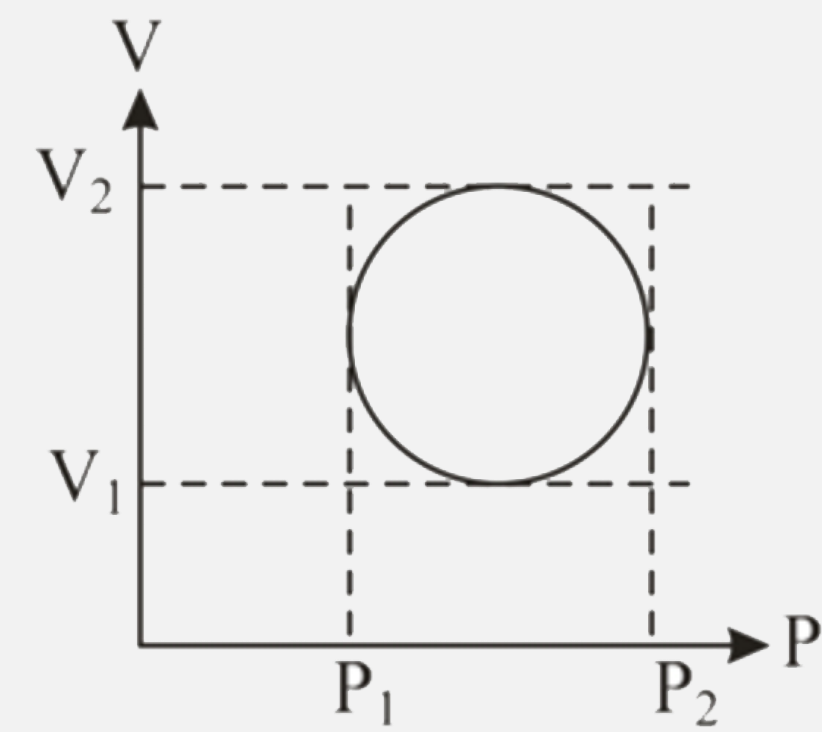In a cyclic process shown on the P−V diargam the magnitude of the work done is :

A
π(P2−P12)2
B
π(V2−V12)2
C
π4(P2−P1)(V2−V1)
D
π(P2V2−P1V1)
Video Solution
Text Solution
The correct Answer is:C
W.D=π× Pressure Radius × volume Radius (area of ellipse)
W=π(P2−P12)(V2−V12)
=π4(P2−P1)(V2−V1)
|
Updated on:21/07/2023
Topper's Solved these Questions
- BOOK - RESONANCECHAPTER - KTG & THERMODYNAMICSEXERCISE - SECTION (D)2videos
KTG & THERMODYNAMICS
- BOOK - RESONANCECHAPTER - KTG & THERMODYNAMICSEXERCISE - SECTION (I)2videos
KTG & THERMODYNAMICS
- BOOK - RESONANCECHAPTER - KTG & THERMODYNAMICSEXERCISE - SECTION (A)3videos
KTG & THERMODYNAMICS
- BOOK - RESONANCECHAPTER - KINETIC THEORY OF GASES AND THERMODYNAMICSEXERCISE - Exercise64videos
KINETIC THEORY OF GASES AND THERMODYNAMICS
- BOOK - RESONANCECHAPTER - MAGNETIC FIELD AND FORCESEXERCISE - Exercise65videos
MAGNETIC FIELD AND FORCES
Similar Questions
Knowledge Check
- Question 1 - Select One
In the cyclic process shown on the P-V diagram the magnitude of the work done is :
 A(P2−P12)2Bπ(V2−V12)2Cπ4(P2−P1)(V2−V1)Dπ(P2V2−P1V1)
A(P2−P12)2Bπ(V2−V12)2Cπ4(P2−P1)(V2−V1)Dπ(P2V2−P1V1) - Question 2 - Select One

In the cyclic process shown in the V−P diagram the magnitude of the work is done isAπ(P1−P22)2Bπ(V1−V22)2Cπ4(P2−P1)(V2−V1)Dπ(P2V2−P1V1) - Question 3 - Select One
In the cyclic process shown on PV diagram, the magnitude of the work done is
 Aπ(P2−P12)2Bπ(V2−V12)2Cπ4(P2−P1)(V2−V1)Dπ(P2V2−P1V1)
Aπ(P2−P12)2Bπ(V2−V12)2Cπ4(P2−P1)(V2−V1)Dπ(P2V2−P1V1)
In the cyclic process shown in P-V diagram the magnitude of work done is :
 View Solution
View SolutionOne mole of an ideal gas undergoes a cyclic process ABCDA as shown in the P-V diagram, The net work done in the process is
(1atm=106 dyne cm−2) View Solution
View SolutionAn ideal gas undergoes cyclic process ACBC as shown is given PV diagram

The amount of work done by the gas isView SolutionAn ideal gas undergoes cyclic process ABCDA as shown in givend p−V diagram. The amount of work done by the gas is
 View Solution
View SolutionA cyclic process is shown on the P-T diagram. Which of the curve shown the same process on a V-T diagram?
 View Solution
View Solution


